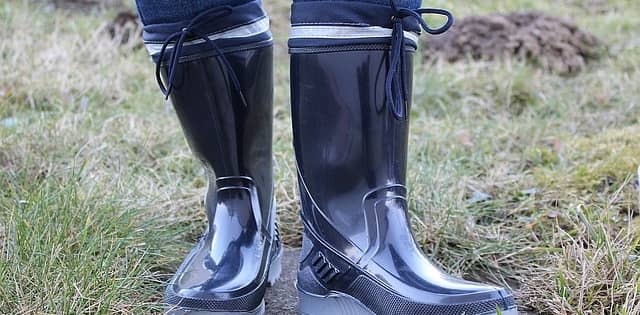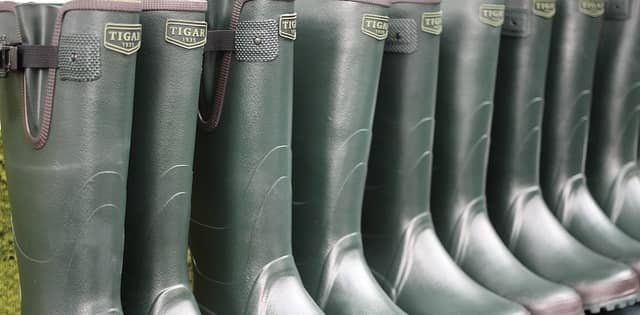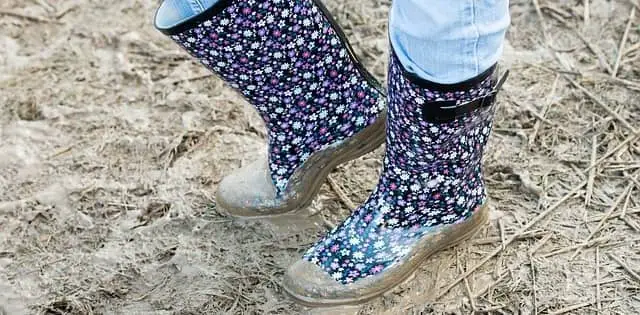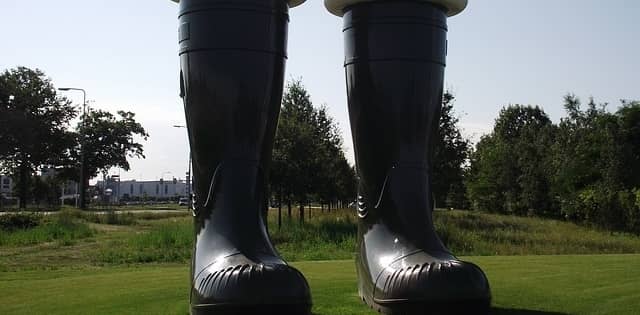Without knowing your proper shoe size, it is nearly impossible to find a boot that fits really well. This would indeed be the first step; however, it won’t be the last. Many people find it difficult to find boots for wider feet and calves that fit well. In case you’ve got wider legs, the wide calf boots are your safest resort.
Most brands of shoes nowadays offer boots that have a wide range of feet and calf widths. Wide calf boots provide a much more comfortable fit for people with bigger legs. Apart from the right size and fitting, it is also very important to invest in a good quality boot so that it can last for years to come.
What is the difference between standard and wide calf boots?
Calf boots are those that rise up to the area of your leg above the ankle, and below the knee. There is a range of styles in which calf boots come. The styles vary both in terms of the length of the ankle and the width. While some calf boots are relatively shorter, rising only a few inches above the ankles, others rise higher up the leg to, and even over, the knee.
In general, a standard calf boot fits tightly and has a narrower leg covering. A wide calf boot, on the other hand, is designed for those who have thicker legs. The wide version also has a lot of room for air, which allows the legs to breathe. Hence, they happen to be more suitable for those who have wider legs.
Are there any health issues related to calf boots?
Leg health issues can indeed be a concern for many people when it comes to wearing boots. Often at times, wearing boots of inappropriate sizes results in cramps and blisters that can be painful and often quite a setback.
The pain associated with inappropriate sizes of calf boots usually appear in the ankle joints or in the leg shin. In case the lower part of the show does not fit well, then blisters might appear on the finger joints or anywhere in your toes.
Two of the most common problems that can result from ill-fitting calf boots include:
Muscle cramps are primarily a result of leg fatigue, overheating, and dehydration. Both heat and dehydration could be a byproduct of calf boots since they happen to cover most part of the leg below the knee. Moreover, tighter calf boots might also prevent the muscles in the leg from stretching up to their full potential during walking or running. This could result in severe muscle cramps.
Shin splints are a type of pain which is a result of inflammation of muscles that run along the shin bone. Often at times, calf boots can trigger shin splints especially when they are tighter near the shin bone.
Proper measuring for work boots

Why should you measure your feet?
Work boots need to be measured correctly or else they will affect your productivity levels in a negative way. You might be wondering, why is there a need for exact measurement of work boots anyway? This is indeed a legitimate question. After all, manufacturers tend to follow standardized charts based on which all their shoe products are sized.
In reality, your foot size may not necessarily align with standard boot sizes primarily due to anatomical differences, even though your feet might be in alignment with standard sizes. This is primarily because boot manufacturers have varying tolerance limits in their manufacturing, which also vary from brand to brand.
People often have one foot that is slightly larger than the other. For some people, the difference in length could be quite significant, so it’s important to measure both feet, to ensure proper fit for both.
In case you end up with the wrong size of work boots, you could very likely end up with:
- Wounds or blisters along with feet sores
- Foot arch or ankle sprains in case the shoe is loose
- Difficulty or pain in walking/running. Too tight or too loose, both will lead to difficulty in walking
- A permanent deformation in the shape of your feet
- Early damaged shoe
What factors affect the fitting of calf boots?

Due to the overall design and structure of calf boots, they are the most difficult of all boot styles to get right. Firstly, you need to consider the fitting around your toes and heels. Secondly, you also need to consider the fit around your ankles followed by the rest of the area that rises above your ankle depending on the length of the boot.
A lot of people do not consider it important for a calf boot to fit right above the ankle, as long as it stands upright. However, it looks rather odd. To be specific, calf boots must also wrap your calf properly, not just fit your feet well. There shouldn’t be too much space around the calf. If the boot wraps well around your calf, and comfortably folds around your ankles and feet, then the size it just right for you!
The height of the person
Depending on the height of a person, the calf boot that one is wearing could end at a different spot on the calf for a person who is shorter versus a person who is significantly taller.
The thickness of the calves
Unique anatomy plays a big role here. Naturally, we all tend to have varying body features. This also includes our calves! While some people have narrower calves, others tend to have thicker and fuller calves despite having a similar or same feet structure/size.
The level of exercise
Those people who regularly engage in physical activities which strengthen the legs, such as swimming, running, cycling, uphill jogging, uphill skating, squats, etc., tend to have more pronounced muscles in their calves. Since this would affect the thickness of the calves, it would ultimately affect the size of calf boots that would fit an individual.
Considering all these factors, it is quite evident that a single general/standardized calf shoe size would not fit all or most of the people. So now, you know what to look for and what factors to consider before investing in a calf boot.
How to get the right fit?
The first step in finding calf boots for wide calves is knowing your shoe size. In this post Work Boots: Key Advice Before Your Next Purchase we cover just that.
Finding calf boots that fit right

Finding calf boots for wider calves
People with wider calves face a lot of challenges. Some might even end up feeling like they should avoid this style. However, this is not true at all! There are a number of things that you can consider for getting boots for wider calves.
Extended boots: Extended calf boots are a style of boots that are made a little bit wider than they are supposed to be, for greater comfort. This type of style is usually an easy way out for people with wider calves.
Elastic panels: A number of calf boots come with elastic panels that are attached on to the sides. These elastic panels add a little bit of more room into the shoe. Shoes with elastic panels are great in case you want just the right fit.
Full zip shoes: A number of calf boots tend to have zips that run throughout the length of the boot. This helps in increasing the overall comfort of the shoe.
Making the boots wider: In case you are totally head over heels for a particular pair of shoe which is too narrow for your calves, there are various ways through which you can stretch them. However, it is not really recommended to stretch a shoe out of shape. Mostly, the materials out of which boots are made of have a bit room for stretching.
Using a boot band could be a nice fix. It is more like a little piece of a V-shaped fabric which can be zipped on to a boot so as to widen it a bit. Quite surprisingly, boot bands do not do any significant damage to the boot at all. Hence, your boot won’t get out of shape. Leather boots, on the other hand, can easily be stretched for added comfort by using a bit of heat. Whilst wearing the shoe with a thick pair of socks, apply heat using a blow dryer at the area that which you want to stretch. Keep wearing the shoe until it cools down and the leather adapts itself account to the contours of your wide feet and calves.
Finding calf boots for narrower calves and feet
Narrower calves can just be as problematic as wider calves. Hence, it is something that also needs to be given its due attention. Thinner people with narrower legs often feel like their legs are too narrow to fit in most of the shoe brands.
Style: For narrower calves, calf boots that are a little slouchy can look really good. Slouchy style calf boots tend to have a softer look due to which the gap looks rather natural. In general, people with narrower calves should avoid any style that does not fit snugly.
Adjustment: There is a range of adjustment options that come for people with narrower calves. Some calf boots have laces or buckles that can be adjusted based on the thickness of the calves. For people with narrower calves, laced up boots can be the best option!
Stretchable calf boots: In the market today, there is a range of options available. From these options, the stretchable calf boots are perhaps the most popular among people with both wider and narrower calves. This is because boots with stretchable calves can easily fit almost any size.
Aiming for mid-calf: For people with narrower calves, choosing a boot that ends at the widest end of the calf can work. This will not only make the calf look wider than it is but will also suit the style.
The height of the heel: For women having narrow legs, calf boots with high heels tend to look better and crisper as compared to boots with flat heels.
Avoid color matching: In case one does not want to look skinnier, then it is better to avoid matching the colors. This is because wearing the same color throughout the body gives a rather slimmer appearance. On the other hand, allowing some mismatching will create an illusion of bulkiness that which many people with narrower calves seek.

Conclusion
Whether you have wider or thinner calves, finding calf boots that fit properly is extremely important. Calf boots that don’t fit properly can cause a number of health issues, such as blisters, muscle cramps, or shin splints, and can also be downright uncomfortable.
Measure both the length and width of both your feet before you start shopping for calf boots. This will give you a good starting point when looking at different boots, because not all boot manufacturers follow standardized sizing.
You will also want to think about different styles for calf boots. For wider calves, consider boot extenders, elastic panels, side zippers, or stretching the boots to make them wider (though this last option isn’t necessarily recommended for all boots).
For narrower legs, think about slouchy style calf boots, boots with buckles or laces, or boots made from stretchable materials.
Being knowledgeable about your options when shopping for calf boots will make the process easier and more enjoyable and will make it easier as well.
